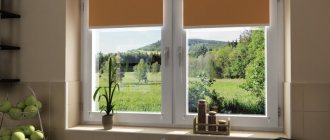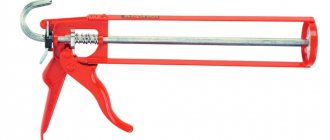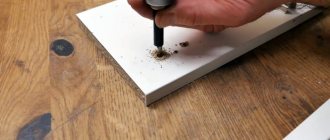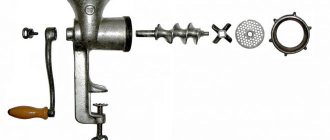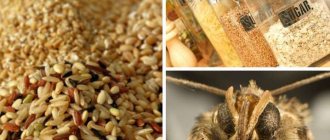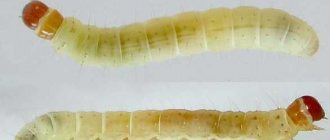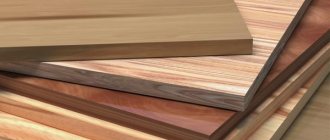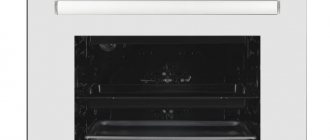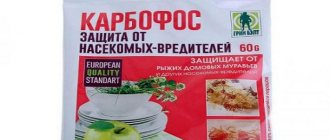Cabinets can be produced in the form of a separate case or built-in.
Built-in ones are mounted directly to the wall of the room at their location. The advantage of individual models is the ability to disassemble, move and place them in any place. Cabinet models always have a cabinet back wall. It isolates the interior space of the cabinet and makes it aesthetically pleasing, especially if the wall behind it is uneven and unfinished. The rear wall of the cabinet rigidly fastens the entire structure and holds it strictly in a vertical position.
The back wall of the cabinet is made of fibreboard (fibreboard).
For safety and reliability, it should be made from chipboard.
The wardrobe is divided into sections, drawers, shelves and is filled with things very unevenly. Under load, the wardrobe may become deformed. To prevent this, in addition to the rear wall, special stiffening ribs can be provided inside.
In addition to the rear wall, special stiffening ribs can be provided inside.
Wood-fiber boards have a good margin of safety.
What is the back wall of the cabinet made of?
The back wall of the cabinet is made of fiberboard (Fiberboard), laminated chipboard (LDSP).
One sheet may not be enough to cover the entire back surface.
Some people suggest nailing the backs of cabinets.
Fiberboard consists of wood fibers, synthetic resins, fillers, and water.
Varies:
- for general and special purposes;
- by hardness - superhard, hard, semi-hard, soft;
- by thickness.
Under load, the wardrobe may become deformed.
The use of a construction stapler is also not recommended.
The slabs can be smooth on one or both sides, varnished, covered with laminate film, or artificial veneer. They also differ in the degree of response to moisture, fire resistance, and exposure to sunlight. The most commonly used hard types are finely dispersed fraction (MDF) or hardboard and harder, modern HDF material made from coniferous wood.
To overcome the problems, you can design a compartment from sections, for each of which one sheet would be enough.
It is best to use self-tapping screws with a washer.
Chipboard is a mixture of sawdust and resins, which under the influence of high temperature and pressure turns into a homogeneous, durable material.
Fastening the back wall of the cabinet is not an idle question at all.
If laminated chipboard is used, then holes are first drilled so as not to split the board, and then self-tapping screws are screwed in.
Varies:
- by grades, which are determined by the appearance of the product;
- by the number of layers;
- according to the degree of surface roughness: unpolished,
polished, laminated;
- by density;
- according to some other indicators.
| Properties | Fiberboard | laminated chipboard |
| Price | Low | High |
| Thickness | 3-5 mm | 10,16,18 mm |
| Influence at strength designs | recommended for tall models | Significantly enhances strength |
| Reaction to moisture, scratches | One side with non-laminated surface may absorb moisture, deep scratches may damage the sheet | Laminated surfaces are moisture-resistant and scratch-resistant. cause significant harm to the material |
| Variety of colors | Five colors | Unlimited quantity, colors not different from color product body |
| Possibility of wall mounting of tall cabinets | Complicated due to small thickness slabs | Any fastening to the wall |
| Parts Compatibility | You can only put each other on friend that can be viewed | Tab into each other, organically and unnoticeably sides |
| Assembly | Assembly is done in "lying" position what does it require additional space | The cabinet is assembled in standing position almost on the spot installations |
The rear wall of the cabinet rigidly fastens the entire structure and holds it strictly in a vertical position.
Improves the rigidity of the entire structure and the fastening of sheets in the grooves selected using a milling cutter in the end posts, cover and bottom of the product.
As we can see from the table, what the back wall of the furniture is made of affects the appearance, ease of assembly, and strength. The back wall of the cabinet, the material of which is made of chipboard, is better in all respects, but also costs five times more. Naturally, its use significantly makes the product heavier.
It isolates the interior space of the cabinet and makes it aesthetically pleasing, especially if the wall behind it is uneven and unfinished.
You need to use multiple sheets.
In the case of tall models and heavy loads, for example, in the form of books, the question does not arise: what should the back wall of the cabinet be made of? For safety and reliability, this should be made from laminated chipboard.
Cabinets can be produced in the form of a separate case or built-in.
The sections are assembled separately, then they are connected to each other at the further location of the product and form a single structure.
In other models, the material from which the back wall of the cabinet is made can be fiberboard, which differs not only in thickness and density. Wood-fiber boards have a good margin of safety. You can also note the duration of operation (up to 30 years) while maintaining the original parameters, and the environmental safety of the slabs.
To prevent this, in addition to the rear wall, special stiffening ribs can be provided inside.
How to strengthen the back wall of a cabinet?
Fastening the back wall of the cabinet is not an idle question at all. Some people suggest nailing the backs of cabinets.
The advantage of individual models is the ability to disassemble, move and place them in any place.
Yes, this method allows you to do it quickly, but such fastening of the rear walls of the cabinets reduces the rigidity of the structure and its strength. In this case, the material of the body and walls is destroyed, creating difficulties in the future when disassembling such a product. The use of a construction stapler is also not recommended. It is best to use self-tapping screws with a washer.
The back wall of the cabinet, the material of which is made of chipboard, is better in all respects, but also costs five times more.
If laminated chipboard is used, then holes are first drilled so as not to split the board, and then self-tapping screws are screwed in. Improves the rigidity of the entire structure and the fastening of sheets in the grooves selected using a milling cutter in the end posts, cover and bottom of the product. In this case, it is important that the dimensions of the sheet to be fixed coincide very precisely with the dimensions of the area to be closed.
Particleboard is a mixture of sawdust and resins.
Fastening is carried out around the perimeter:
- to partitions and end walls;
- to the ceiling from above;
- to the base of the structure;
- to permanently fixed shelves.
They also differ in the degree of response to moisture, fire resistance, and exposure to sunlight.
Plastic
Plastic cabinets are increasingly found in interiors. Modern polymers are absolutely unpretentious to temperatures and other influences, and also do not require maintenance. Therefore, plastic furniture is used on balconies and loggias, where it is hot in summer and cold in winter, in bathrooms, where humidity is constantly high, in children’s rooms, where practical and safe materials are needed.
Plastic cabinets cannot boast of large capacity. The thing is that their design is relatively light in weight, so it cannot cope with heavy loads. Typically these are single- or double-leaf models with several rows of shelves. But if necessary, such furniture can be easily moved or moved to the right place.
How to fasten the wall at the joints?
One sheet may not be enough to cover the entire back surface. To do this you need to use several sheets. In this case, the following options for connecting sheets are possible:
- if the joint lies at the end of the partition:
– both sheets are pressed against the partition using self-tapping screws with a washer;
– the sheets are overlapped;
- if the joint does not fit on the end of the partition:
– both sheets are connected using a mortise strip into which they are inserted;
- the sheets are glued together.
The slabs can be smooth on one or both sides, varnished, covered with laminate film, or artificial veneer.
To overcome these problems, it is possible to design the compartment from sections, each of which would require one sheet. The sections are assembled separately, then they are connected to each other at the further location of the product and form a single structure.
Fiberboard consists of wood fibers, synthetic resins, fillers, and water.
How to choose quality fittings
There are a great variety of alloys from which furniture fittings are made, so there is no need for a non-specialist to understand all these intricacies. In addition, manufacturing companies are constantly improving the quality of their products and patenting new compositions. The main things you should pay attention to when choosing accessories:
- The manufacturer's logo must be in the most visible place and clearly legible.
- The color of the metal must be uniform, without stains, burrs, roughness, or streaks.
- Open fittings are a thing of the past; it is better to give preference to hidden mechanisms.
- When opening and closing doors, they should not creak, knock, wobble or generally cause any suspicion.
- Drawers should not rattle, jam, or slide to the side.
- The finishing mechanism, if present, must work without any complaints.
By following these recommendations, you can not only choose high-quality furniture that is suitable in price and functionality, but also purchase a product that will last for many years, maintaining its presentation.
Source: pitmebel.ru
